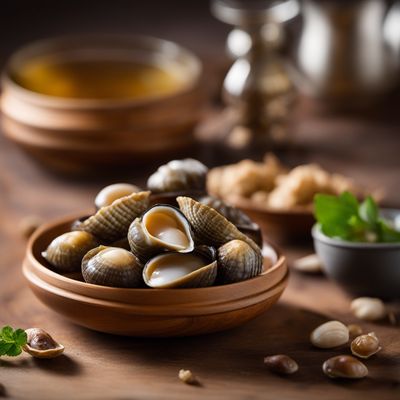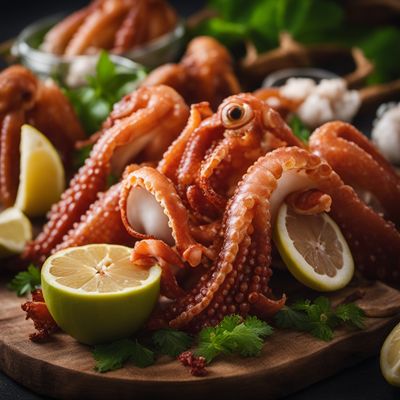
Ingredient
Molluscs
Oceanic Delicacies
Molluscs are soft-bodied invertebrates that inhabit both freshwater and marine environments. They have a wide range of shapes, sizes, and colors, but they all share a common characteristic of having a hard shell for protection. Molluscs have a mild, briny flavor with a hint of sweetness, and their textures can range from tender and succulent to slightly chewy.
Origins and history
Molluscs have been consumed by humans for thousands of years and have played a significant role in various cuisines around the world. They were a staple food for ancient coastal civilizations and continue to be highly valued today. Molluscs are often associated with coastal regions and are an important part of the culinary traditions in countries like France, Italy, and Japan.
Nutritional information
Molluscs are a good source of lean protein, omega-3 fatty acids, and essential minerals such as iron, zinc, and selenium. They are also low in calories and fat. However, individuals with shellfish allergies should avoid consuming molluscs.
Allergens
Shellfish, including molluscs, are known allergens that can cause severe allergic reactions in some individuals. People with shellfish allergies should avoid consuming molluscs or any dishes that contain them.
How to select
When selecting molluscs, choose specimens that are alive and have tightly closed shells. Avoid molluscs with broken or damaged shells, as they may be dead or spoiled. Freshness is crucial, so it's best to purchase molluscs from reputable seafood markets or suppliers that have a high turnover of stock.
Storage recommendations
Live molluscs should be stored in a cool, damp environment to keep them alive and fresh. Place them in a bowl or container lined with a damp cloth or seaweed, cover with a damp cloth, and store in the refrigerator. It's important to consume live molluscs as soon as possible for the best quality and flavor. Shucked molluscs should be refrigerated and consumed within a day or two.
How to produce
Molluscs are typically harvested from their natural habitats in oceans, seas, or freshwater bodies. They cannot be easily produced or cultivated by amateurs due to the specific environmental conditions required for their growth and development.
Preparation tips
Molluscs can be prepared in various ways, including steaming, boiling, grilling, or frying. They can be enjoyed on their own, served with a squeeze of lemon or a dipping sauce, or incorporated into pasta dishes, soups, stews, or seafood platters. It's important to follow proper cooking times and techniques to ensure that molluscs are cooked thoroughly and safe to eat.
Substitutions
Clams, mussels, oysters, and scallops can be used as substitutes for each other in many recipes. However, keep in mind that the flavors and textures may differ slightly. If a recipe calls for a specific type of mollusc, it's best to use the recommended variety for the most authentic results.
Culinary uses
Molluscs are widely used in various cuisines around the world. They are commonly featured in dishes such as clam chowder, moules marinières, oysters Rockefeller, or scallop ceviche. Molluscs can also be used to enhance the flavors of pasta dishes, risottos, or paellas.
Availability
Molluscs are commonly available in coastal regions and areas with access to fresh or saltwater bodies. They can be found in seafood markets, fishmongers, or specialty seafood stores. The availability may vary depending on the local fishing seasons and regulations.
More ingredients from this category

Abalones, winkles, conchs
Oceanic Delicacies: Exploring the World of Abalones, Winkles, and Conchs

Freshwater molluscs
Delicate Aquatic Gems

Squids, cuttlefishes, octopuses
Oceanic Delights

Miscellaneous marine molluscs
Oceanic Treasures: Miscellaneous Marine Molluscs

Scallops, pectens
The Delicate Gems of the Sea: Exploring the World of Scallops

Clams, cockles, arkshells
The Ocean Treasures

Mussels
The Ocean's Delicacy

Oysters
"Oceanic Delicacy: Exploring the World of Oysters"